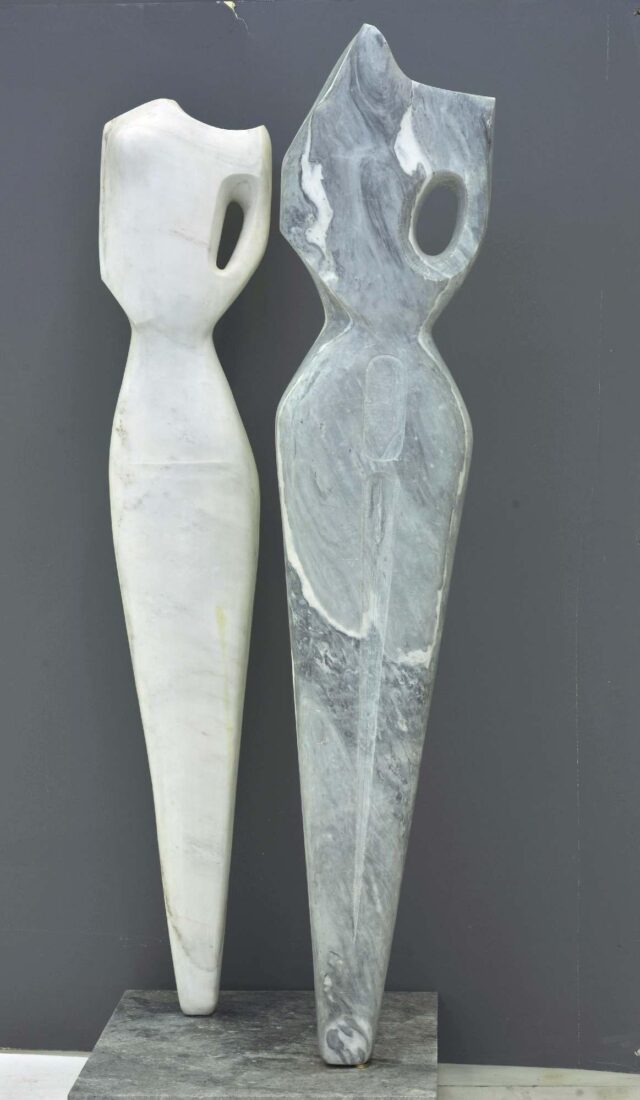We use cookies to make our site work properly, to personalize content and ads, to provide social media features and to analyze our traffic. We also share information about how you use our site with our social media, advertising and analytics partners. Read the Cookies Policy.

Two Girls, 1950
Marble, 165 x 30 x 16 cm
Until the late 1940s, the human figure and the figurative approach all but monopolised the attention of Greek sculptors. Nevertheless, although some remained committed to the academic approach, or to the post-Rodin French school style, others increasingly turned towards more simplified and abstract shapes, each shaping his personal style through various influences by the European avant-garde. Thus, they approached the human figure with a new perception, which led to a diversity of treatments: simplified, or completely stylised and suggestive, fragmentary, or expressionistic.
In the National Gallery collection, the work that marks the shift towards the abstracted, allusive rendition of the human figure, in what is in fact one of the most “extreme” examples, while also ushering in the 1950s, is “Two Girls” by Lazaros Lameras. Reminiscent of Cycladic figurines, the two girls are upright, stylised and almost two-dimensional, retaining only the basic elements of female body forms, reaching the limits of abstraction.

